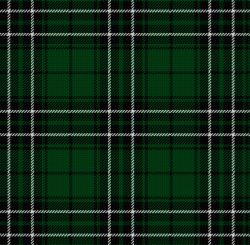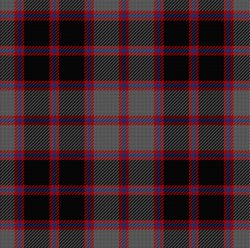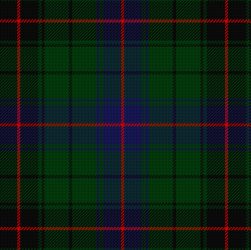
 Clann Dhaibhidh
Clann Dhaibhidh
Chief: Grant Guthrie Davidson
The Clan Davidson [also known as Clan Dhai], is descended from David Dubh, possibly a son of one of the early Chattan chiefs. The Davidsons feature in the 14th century when they sought the protection of Clan Chattan, after the downfall of the Comyn family.
Traditionally, the Clan Davidson has thought of the Badenoch area in the Upper Spey valley as one of its homelands. Today, we realise that it is most unlikely that all Davidsons are descended from a common ancestor. More recent research indicating the presence of early clusters of Davidsons in other parts of Scotland confirms this point.
Tulloch Castle near Dingwall was acquired in 1763 by a prominent Davidson family from Cromarty. Since that time, this family and their descendants have been taken on the role as Chiefs of the Clan Davidson. Clan Davidson Association also maintain a small museum at Tulloch Castle.
Motto: Sapienter Si Sincere (Wisely if Sincerely)
Clan Badge: Red Whortleberry
Septs: Davie, Davis, Dawson, Dow, MacDade, Macdaid, MacDavid, Kay.
Clan website http://www.clandavidson.org.uk/

Macleans of the North
Clann Thearlaich
Chief: Very Rev. Allan Maclean of Dochgarroch
The Macleans of Dochgarroch are the Chiefs of Clan Tearlach, the 'Macleans of the North', named from Tearlach [Charles] Maclean, eldest son of Hector Maclean, 1st of Lochbuie, brother of Lachlan Maclean, 1st of Duart.
Tearlach was in the vanguard of the Lords of the Isles and was Constable of Urquhart Castle from 1394, but following the Battle of Harlaw in 1411 he sought protection within the Clan Chattan. His son Hector married a daughter of the Chief of the Mackintoshes.
Despite the active support of the Mackintoshes and Clan Chattan, the Macleans lost ownership of Urquhart in 1509, and settled nearby at Dochgarroch, though they still managed to lease much of Urquhart. In 1609 Alexander Maclean of Dochgarroch signed the Clan Chattan Bond.
Motto: Virtue mine Honour
Clan Badge: Crowberry or Holly
Septs: Auchaneson, Gillan, Gillon, Gilzean, Lane, Lean, MacEachan, Maclaine, McLean.
For The Clan website go to ‘Links’ on the information bar.
 Clann Bheathain
Clann Bheathain
Chief: James H. McBain of McBain
The progenitors of Clan MacBean came from Lochaber to Petty in the 14th century, seeking the protection of the Mackintoshes, having slain the Red Comyn's steward.
Although its numbers were heavily depleted at the Battle of Harlaw in 1411, the Clan remained an active member of the Confederation.
Gillies MacBean is particularly remembered for his bravery at the Battle of Culloden. Today there is a fine memorial park for the Clan in its ancestral lands at Kinchyle, overlooking Loch Ness near Dores.
Motto: Touch not a catt bot a targe
Clan Badge: Red Whortleberry
Septs: Bain, Bean, McBain, MacBean, McBeath, MacBeth, Macilvian and MacVean.
For the Clan website go to ‘Links’ on the information bar.
 Clann An Toisich
Clann An Toisich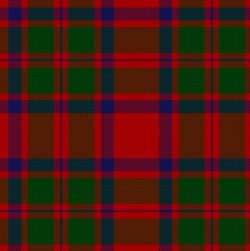
Chief: John L. Mackintosh of Mackintosh BA (Hons)
Shaw Macduff, son of the Earl of Fife, was appointed keeper of the Royal Castle of Inverness around 1163 and received lands at Petty and in Strathdearn. He took the name Mac an Toiseach – The son of Thane (a noble acting as an official of the crown). The connection with Clan Chattan began in 1291 through the marriage of Eva and Angus and, for almost 650 years, the Chief of Clan Mackintosh was also the Captain of Clan Chattan.
The Mackintosh territory at one time extended into Lochaber and Badenoch, but for centuries it has had a close association with the town of Inverness (now of course a City), whose southern approaches the Clan dominated. In 1938 the Chief died without direct male heir and the Lord Lyon held that the chiefship of Clan Chattan had become separated from that of Mackintosh. Until his death in 1995, The 30th Chief, Lachlan Mackintosh of Mackintosh lived at Moy which had been acquired by William, 7th Chief of Mackintosh in 1336.
John Mackintosh of Mackintosh is the 31st Chief.
Motto: Touch not the Cat bot a glove
Clan Badge: Red Whortleberry
Septs: Adamson, Ayson, Aysons of N.Z., Clark, Clarke, Clarkson, Clerk, Crerar, Dallas, Elder, Esson, Glen, Glennie, Gollan, Heggie, Hardie, Hardy, MacAndrew, MacAy, MacCardney, MacClerich, MacChiery, McConchy, Macglashan, Machardie, Machardy, Machay, Mackeggie, MacKillican, MacLerie, MacNiven, MacRitchie, Niven, Noble, Ritchie, Tarrill, Tosh and Toshach.
For the Clan website go to our ‘Links’ section
 Clann Phail
Clann Phail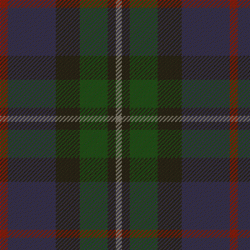
The MacPhails are of the old Clan Chattan and most likely descend from a Paul Cattanach of Lochaber, in the western Highlands near the present Fort William. MacPhail means “The son of Paul” Originally the MacPhails had a stronghold until 1291 at Fassifern, which is about ten miles west of Fort William. When Eva the heiress to Dougal Dall the then Chief of the Clan Chattan married Angus, 6th Chief of Clan Mackintosh. Dougal gave Angus the Chiefship of Clan Chattan along with his Daughter. At this point the Clan Chattan moved to Badenoch in the East, where The Mackintosh had estates. However some MacPhails stayed behind in the west and eventually integrated with the Cameron’s and later lower down in Argyll with the Campbell’s. The MacPhails have always been considered to be from “old Clan Chattan stock”, and not of the blood of the Mackintosh, but closer to the other old tribes, of Macphersons, MacBeans and Cattanachs.
The MacPhails of Inverarnie (Chiefly family) had numerous Chiefs from the earliest times, however the first recorded Chief was Duncan MakDonequhy Dow MacPhail 1st Chief who owned half lands and held deeds for Tullich and Elrig in 1546. The last Chief was Paul MacPhail who died in Australia in 1904 with no heir.
Motto: “Memor Esto” Be Mindfull
Clan Badge: Red Whortleberry
Septs: MacPhail, MacPheal, MacPhaile, MacPhayll, McFall, MacFall, McFaul, McFell
For The Clan website go to ‘Links’ on the information bar.
 Clan Macqueen
Clan Macqueen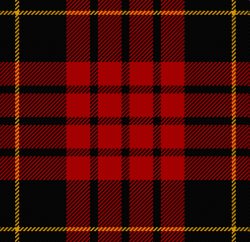
Clann Shuibhne or Clann Reven
The Macqueens of Clan Chattan are a small branch of an ancient Skye Clan. They became members in the 15th Century after the marriage of Mora Macdonald of Moidart with Calum Beg Mackintosh, 10th of Mackintosh.
Reven, also known as Roderic mac Milmor vic Swen, who was in the wedding party, settled in Corrybrough in Strathdearn and the Clan took his name. Macqueen of Pollochaig is reputed to have killed the last wolf in Scotland in 1743.
Motto: Constant and Faithful
Clan Badge: Boxwood
Septs: MacCunn, MacSwan, MacSween, MacSwen, MacSwyde, Swan.
For The Clan website go to ‘Links’ on the information bar
 Clann Ay
Clann Ay
Chief: Iain Shaw of Tordarroch
With a common stem that goes back to the Earls of Fife, the history of the Shaws and the Mackintoshes is as deeply interwoven as the tartans they wear.
The word Shaw is a corrupt Anglicised rendering of part of the ancient Gaelic style Toiseach meaning first, foremost or leader, and is still the name given to the premier of Eire.
Three of the first four Chiefs of Clan Mackintosh were all Shaws, and the Shaw was made Constable of Inverness Castle in 1163. Since then, the family have played an important role in Highland and Scottish history, a history that is still developing.
The founder of the Clan Shaw was John, second son of Angus and Eva, heiress to Clan Chattan. His grandson, Shaw Mor, led the thirty champions of the Clan Chattan to victory at the ordeal by battle on the North Inch of Perth in 1396. As a reward, the family were granted lands at Rothiemurchus near Aviemore. By 1567, these lands became the property of the Grant family.
After losing their stronghold at Rothiemurchus, the clan family have been represented by the Clann Ay in Strathnairn at Tordarroch. There were junior branches at Dell, Dalnavert and Kinrara, Deeside and the Perth and Angus Highlands. Many Shaws took part in the 1715 and 1745 Jacobite Risings.
The present and 23rd Chief, Iain Shaw of Tordarroch and his partner Ana Maria Prades Llombart live in Spain with their son, James Shaw of Tordarroch Prades. Iain’s other three children, Iselin, Marcus Alexander, and Sunniva Shaw of Tordarroch, live in Oslo, Norway.
Iain became 23rd Chief after the death of his father, John Shaw of Tordarroch in 2017. John and his wife Silvia lived in Mallorca, Spain where they pursued their interest in local culture and history. They maintained contact with Shaws all over the world. The Family also retain ancient and close connections with the history of the Black Isle and that of the Newhall Estate and the parish of Resolis.
Motto: Fide et fortitudine (by fidelity and fortitude)
Clan Badge: Red Whortleberry
Septs: Ayson (N.Z.), Adamson, Esson, MacAy, MacHay, Shiach, Sheach, Sheath, Seith, Seth, Skaith, Scaith
For The Clan website go to ‘Links’ on the information bar.
 Clann Ghillebhraith
Clann Ghillebhraith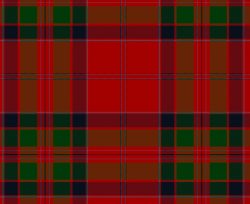
Commander: Iain D. MacGillivray
A Clan of great antiquity which originated in the west, they were the first ‘not of the blood’ in Clan Chattan, having sought protection of the Mackintosh in 1268.
They shared the fortunes of Clan Chattan for 5 centuries and faithfully followed the Mackintoshes. Dunmaglass in Strathnairn was their centre from an early time. Their Chief Alasdair Ruadh, led the Mackintosh Regiment during the ’45 and fell at the ‘Well of the Dead’ on Culloden Field.
There has been no recognised Chief since 1914, however, The Lord Lyon, in 2016 appointed a new Clan Commander.
Motto: Touch Not this Cat
Clan Badge: Red Whortleberry
Septs: Gilroy, MacGillivoor, MacGilroy, MacGilvra, Macgilvray, Macilroy, Macilvrae.
For the Clan website go to ‘Links’ on the information bar.
Clan Mhuirich– Guardians of the Crossroads
Chief: Sir William Macpherson of Cluny T.D.
Muriach Cattenach, the one time lay Parson of Kingussie, was followed by three grandsons who formed the “ Posterity of the The Three Brethren” the progenitors of the Clan Macpherson , who occupied an important and sometimes independent position in the Highlands
During the 14th century they migrated from Lochaber to Badenoch when they defeated the Comyns at the behest of Robert the Bruce, as later recalled in the Arms of Cluny, dating from 1672, which include a representation of a Dagger laced with Blood which refers to that defeat.
During the Jacobite Rising of 1745-6 they proved their loyalty to Prince Charles Edward Stuart by gallant service in the battles of Clifton and Falkirk. The last to leave Derby and fighting all the way back as rearguard, resulted in the Clan arriving late for Culloden but still saved many lives, preventing total slaughter by Cumberland’s troops. The Chief also provided refuge to the Prince in Cluny’s Cage, a hide out on the slopes of Ben Alder above Loch Ericht.
‘A Clan to be feared in war but one which welcomes visitors to its lands.’
The Clans traditions are celebrated in an Annual Gathering or Rally held in Badenoch each August, and in their famous Clan Museum at Newtonmore.
Motto: Touch not the cat bot a glove
Clan Badge: White Heather
Septs: Archibald, Carson, Cattanach, Clark, Clarke, Clarkson, Clerk, Clooney, Clunie, Currie, Ellis, Fersen, Gillespie, Gillies, Gow, Gowan, Keith, Lees, MacChlerich, MacChlery, MacCurrach, MacGowan, MacKeith, MacLees, MacLeish, Maclerie, MacLise, MacMurdo, MacMurdoch, MacMurrich, MacVurrich, Murdo, Murdoch, Murdoson, Parson, Pearson, Smith.
For The Clan website go to ‘Links’ on the information bar.
 MacIntyres in Badenoch
MacIntyres in Badenoch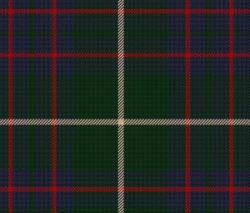
MacIntyre means ‘son of the carpenter’ so there are many families with the name in the Highlands.
The Clan Chattan MacIntyres appear to have been based in Badenoch and early records suggest that a Mackintosh chief took a MacIntyre bard, the family’s progenitor, under his protection in 1496.
Motto: Per Ardua (through adversity)
Clan Badge: White Heather
For the Clan website go to our ‘Links’ section
 Clann Fhionnlaigh
Clann Fhionnlaigh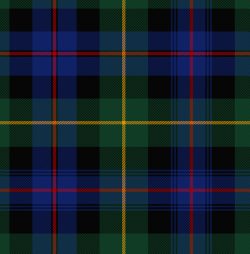
Chief: Philip Farquharson
A Farquhar Shaw, the 4th son of Alexander 3rd, Shaw of Rothiemurchus, was the ancestor of Clan Farquharson. His son married the heiress of Invercauld and the Clan gained its lands on Deeside. Its most famous Chief was Finla Mor who consolidated the Clan and who carried the Royal Standard at the Battle of Pinkie in 1547.
In the 18th Century, connections between Farquharson and Mackintosh were strengthened by the marriage of a daughter of the Farquharson Chief to the then Chief of Clan Chattan.
‘Colonel Anne’ as she was known raised the Clan Chattan regiment for Prince Charlie during the ’45.
Motto: Fide et Fortitudine (By Faith and Fortitude)
Clan Badge: Scots Fir
Septs: Coutts, Farquhar, Findlay, Findlayson, Finlay, Finlayson, Grevsach, Hardie, Hardy, Lays, Lyon, MacCaig, MacCardney, MacEaracher, MacFarquhar, MacGruaig, MacHardie, MacKerchar, MacKerracher, MacKinlay, Patterson, Reach, Riach.
For the Clan website go to ‘Links’ on the information bar.
 Clan MacThomas
Clan MacThomas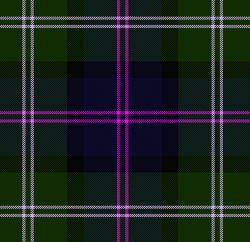
Chief: Andrew P.C. MacThomas of Finegand
The Clan takes it’s name from Thomas, known in Gaelic as Tomaidh Mor (big Tommy) who was a descendant of the Clan Chattan Mackintoshes, his Grandfather being a son of William 8th Chief of Clan Chattan. Thomas lived in the 15th century at a time when the Clan Chattan Confederation was becoming large and unmanageable and so he took his kinsmen and followers across the Grampians from Badenoch to Glenshee where they settled and flourished being known as McComie, McColm and MacComas.
To the government in Edinburgh, they were known as MacThomas and are so described in The Roll of the Clans in the Acts of the Scottish Parliament in 1587 and 1595. MacThomas remains the official name of the Clan to this day, notwithstanding the fact that few of it’s members have ever actually been named MacThomas.
The 7th Chief was John McComie (McComie Mor) and his deeds have passed into the folklore of Pertshire and Angus, where the legends surrounding this highland hero abound.
Motto: I shall overcome envy with God’s help
Clan Badge: Snowberry
Septs: Comb, Combie, McColm, McComas, McComb, McCombie, McComie, McComish, Macomie, MacOmie, MacOmish, Macthomas, Tam, Thom, Thomas, Thoms, Thomson.
For The Clan website go to ‘Links’ on the information bar.
